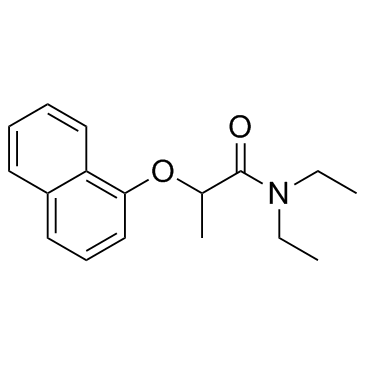[Degradation and adsorption behavior of napropamide in soils].
Hua Guo, Hong-mei Zhu, Hong Yang
文献索引:Huan Jing Ke Xue 29(6) , 1729-36, (2008)
全文:HTML全文
摘要
Chromatography (HPLC and GC-MS) and spectroscopy (UV and FT-IR) methods were conducted to study the degradation and adsorption behavior of napropamide in soils. Influence factors of degradation, degradation products and adsorption mechanism were analyzed. The results showed that degradation rate of napropamide increased with enhancing temperature (15-35 degrees C) and organic matter content in soil was the most important factor which influenced the degradation half-life of napropamide in soil, and their relative coefficient (r) reached 0.9794. The degradation half-life of napropamide in sterilized soil was almost 3-fold of that in non-sterilized soil, and soil microorganisms were contributed to the degradation of napropamide. The probable degradation products were N-methyl-2-(1-naphthoxy)-propionamide and N-ethyl-2-(1-naphthoxy)-propionamide. The possible degradation pathways were dealkylation. Adsorption isoterms of napropamide on three soils such as Yellow-brown soil, Latersol and Black Soil could be described by Freundlich equation with the corresponding adsorption coefficient (Kf) of 1.29, 3.43 and 13.36, and the adsorption free energy (delta G) of napropamide on the three soils was less than 40 kJ x mol(-1) which largely resulted from the physical adsorption involving in hydrogen-bonding, hydrophobic bonding, coordination and van der waal force. Comparison to the FT-IR spectra of the three soils, the results certificated that the sorption capacity of three soils was Black Soil > Latersol > Yellow-brown Soil.
相关化合物
| 结构式 | 名称/CAS号 | 分子式 | 全部文献 |
|---|---|---|---|
 |
草萘胺
CAS:15299-99-7 |
C17H21NO2 |
|
Multiresidue method for the determination of 13 pesticides i...
2011-09-15 [Talanta 85(3) , 1500-7, (2011)] |
|
Picloram and napropamide sorption as affected by polymer add...
2002-01-01 [J. Environ. Qual. 31(4) , 1234-9, (2002)] |
|
Impact of soil amendments on broccoli quality and napropamid...
2005-10-01 [Bull. Environ. Contam. Toxicol. 75(4) , 797-804, (2005)] |
|
Napropamide residues in runoff and infiltration water from p...
2005-01-01 [J. Environ. Sci. Health B 40(3) , 385-96, (2005)] |
|
Fate of napropamide herbicide in selected Malaysian soils.
2012-01-01 [J. Environ. Sci. Health B 47(2) , 144-51, (2012)] |